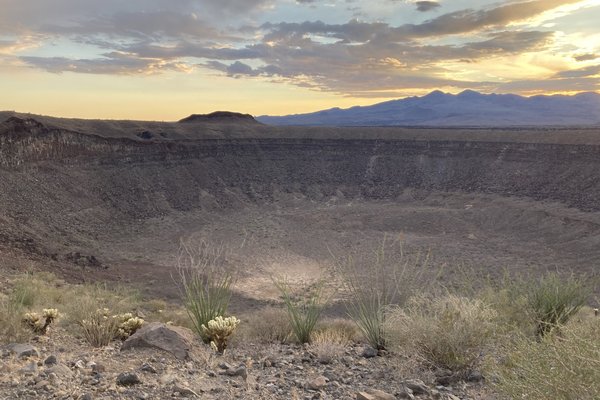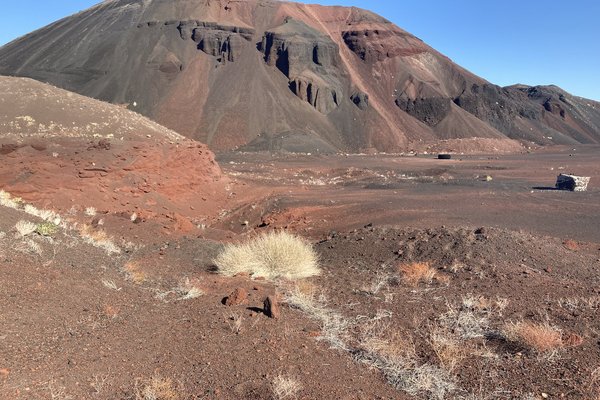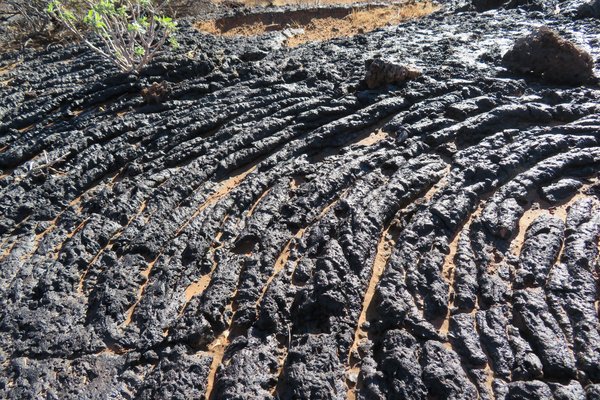Mexico
El Pinacate
El Pinacate and Gran Desierto de Altar National Biosphere Reserve represent a large and pristine desert landscape with a rich biodiversity.
The site, located in the Sonoran Desert, comprises the Pinacate shield, a dormant volcanic area, and the Gran Altar Desert with its active sand dunes that can reach 200m in height. The dark-coloured volcanic area forms a stark visual contrast to the sea of dunes. Among the many endemic plants and mammals is the Sonoran Pronghorn.
Community Perspective: Start your visit at the excellent Schuk Toak visitor center, from where you can walk into the dunes or drive your car on the unpaved roads (better with high clearance) into the volcanic part of the park, as described by Kyle. Els and Clyde visited as part of an overnight camping tour.
Site Info
Official Information
- Full Name
- El Pinacate and Gran Desierto de Altar Biosphere (ID: 1410)
- Country
- Mexico
- Status
-
Inscribed 2013
Site history
History of El Pinacate
- 2013: Inscribed
- Inscribed
- Type
- Natural
- Criteria
- vii
- viii
- x
Links
- UNESCO
- whc.unesco.org
- Official
-
- elpinacate.com.mx — Museo Schuk Toak
- facebook.com — Reserva Del Pinacate
- Related
-
- puerto-penasco.com — El Pinacate
All Links
UNESCO.org
- whc.unesco.org — whc.unesco.org/
Official Website
- elpinacate.com.mx — Museo Schuk Toak
- facebook.com — Reserva Del Pinacate
Related Resources
- puerto-penasco.com — El Pinacate
News Article
- Feb. 27, 2020 cronkitenews.azpbs.org — UNESCO urged to protect El Pinacate WHS threatened by border wall construction
Community Information
- Community Category
- Natural landscape: Desert
Travel Information
WHS Commandments Stars
Recent Connections
-
Named after a Mountain
Cerro del Pinacate - 1,190 m -
WHS Commandments Stars
Scores on all 10 criteria plus has an e… -
Used for astronaut training and research
"in 1965 NASA used the El Verdugo crate…
Connections of El Pinacate
- Geography
-
-
Maars
"The most visually striking feature is the concentration of a total of 10 enormous, deep and almost perfectly circular Maar (steam blast) craters, believed to originate from a combination of eruptions and collapses." (OUV) -
Gulf of California
Its southern tip lies some 500m from the Gulf coast near Highway 3 -
Volcanic Cone
"more than 400 cinder cones" (OUV)
-
- Trivia
-
-
On Banknotes
200 peso note in G-series (issued 2019) shows Desert and matorral ecosystems represented by the golden eagle and El Pinacate y Gran Desierto de Altar Biosphere Reserve
-
- History
-
-
Paleo-Indian
first occupation 20,000 years BP (wiki); "Human occupation in El Pinacate y Grand Desierto de Altar dates back to approximately 40,000 years ago (Hayden, 1976, 1998). In this place, the occupation and abandonment of land, and therefore the use of natural resources, has been linked to periods of drought." (nom file)See en.wikipedia.org
-
Pre-Clovis archaeological sites in the Americas
"Human occupation in El Pinacate y Grand Desierto de Altar dates back to approximately 40,000 years ago (Hayden, 1976, 1998). In this place, the occupation and abandonment of land, and therefore the use of natural resources, has been linked to periods of drought." (nom file)See en.wikipedia.org
-
- Ecology
-
-
Dunes
Gran Altar Desert: North America's largest field of active sand dunes and only active Erg dunes. (AB ev) -
Lava tubes
"of a series of impressive large craters and more than 400 cinder cones, lava flows, and lava tubes" (OUV) -
Notable for Bats
Large maternity caves of the migratory Lesser Long-Nosed Bat (OUV) -
Turtles and tortoises
Desert tortoise and Sonora mud turtleSee www.yichuans.me
-
High-Biodiversity Wilderness Area
North American Deserts, Southwest United States and Mexico -
Ergs
"the Gran Altar Desert, North America's largest field of active sand dunes and only active Erg dunes" (AB ev)
-
- World Heritage Process
-
-
Perfect Inscriptions
2013 -
Extension Supported
"Also encourages the State Parties of Mexico and the United States of America to strengthen cooperation on the conservation and management of the shared Greater Sonoran Desert Ecosystem, building upon the existing agreements and working relationships at all levels, which may eventually lead to the formal establishment of a transboundary protected area. Transboundary cooperation to maintain and enhance the management of the property is essential and therefore the formal establishment of a Transboundary Protected Area with adjoining protected areas in the United States is highly recommended." (Decision 37 COM 8B.16)
-
- WHS on Other Lists
-
-
Ramsar Wetlands
Agua Dulce (2008) -
WWF Global 200
Terrestrial, Deserts and Xeric Shrublands: (130) Sonoran-Baja Deserts (subregion Sonoran desert)See web.archive.org
-
World Biosphere Reserves
"it was recognized as a UNESCO Biosphere Reserve jointly with the adjacent Bay of Adair under the name of Alto Golfo de California in 1993, later expanded to include the national Upper Gulf of California and Colorado River Delta Biosphere Reserve" (AB ev) -
Centres of Plant Diversity
NA38 Sonoran Desert, including Baja California - "home to complex communities and surprisingly high species diversity across many taxonomic groups of flora and fauna. More than 540 species of vascular plants"
-
- Timeline
-
-
Pliocene
The volcanoes have erupted sporadically for about 4 million years. (Wiki)
-
- Science and Technology
-
-
Used for astronaut training and research
"in 1965 NASA used the El Verdugo crater to test moon vehicles" (UNEP) / NASA sent astronauts to the Gran Desierto de Altar from 1965 to 1970, to train for walking on the moon, due to the similarities of the terrain to the lunar surface. (wiki)
-
- Visiting conditions
-
-
WHS Commandments Stars
Scores on all 10 criteria plus has an excellent visitor center.
-
- WHS Names
-
-
Named after a Mountain
Cerro del Pinacate - 1,190 m
-
News
- cronkitenews.azpbs.org 02/27/2020
- UNESCO urged to protect El Pinacat…
Community Reviews
Show full reviews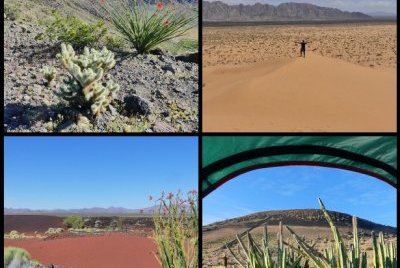
I visited this WHS in spring 2024. At first glance El Pinacate and Gran Desierto de Altar National Biosphere Reserve seems to be made up of two completely different components. By visiting the great Schuk Toak Visitor Centre (usually closed Monday to Wednesday, but not always) and its interesting lava trails + 5 kilometre dune trail (closed in summer and when temperatures get too high), you'll already get a good overview of the site (especially the Gran Desierto de Altar National component) and its OUV.
Each season in the Pinacate Biosphere Reserve has its attraction: autumn and winter are good for hiking, astronomical observation and fauna observation, although in winter it gets very cold at night. Spring is much more temperate and is really great for observing flowering flora and for bird watching. Summer tends to be very hot so it is the best time to spot more reptiles, however, the dune trail is closed due to high temperatures.
After being quoted ridiculous prices for day tours from Puerto Penasco (apparently it is very easy to get there from the US, so tourist services are catered (and priced!) mostly for Americans), I decided to follow Els' footsteps and booked a one night-two day camping tour (Noche de Estrellas en El Pinacate) with the excellent Pinacate Tours from Hermosillo. Departure from Plaza Emiliana de Zubeldia is at 6am sharp in a white van. I paid a bit extra for a solo tent, sleeping bag and inflatable mattress for extra …
Keep reading 0 comments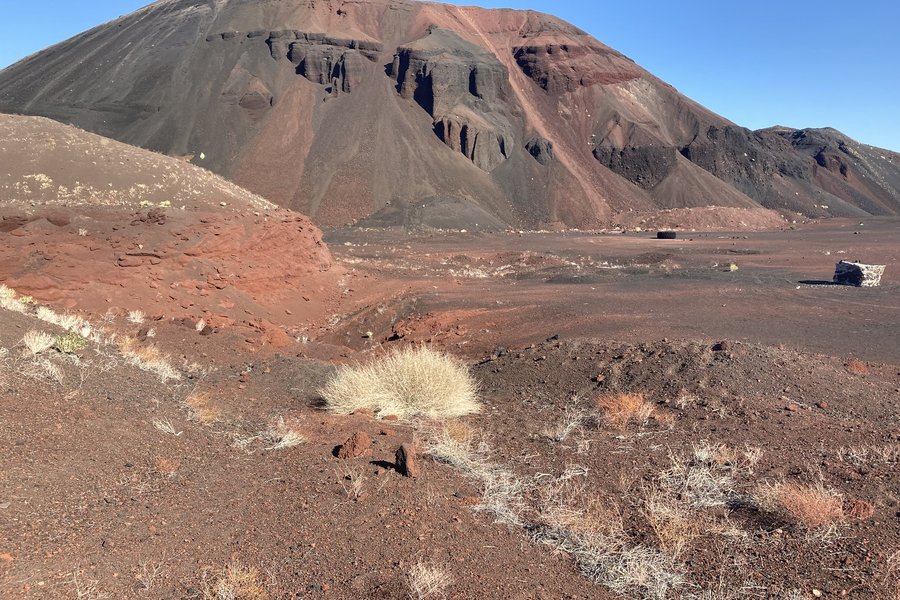
EPGDABR, short for “El Pinacate and Gran Desierto de Altar National Biosphere Reserve”, is another rarely visited WHS in the far North of Mexico. After contemplating a lot of options on how to get there (Fly to Mexicali and rent a car? Take a bus the loooong way west from Chihuahua?), I stumbled upon a 2-day / 1-night camping tour out of the Sonoran state capital of Hermosillo. It ticked all my boxes as it would cover both the sand dunes (Gran Desierto) and the volcanic landscape (El Pinacate), provide transport & lodging, and it was cheap and convenient as well. This WHS is complicated in many ways, so brace yourself for a long review.
The first question that needs to be answered is “What is it exactly about?”. The landscape is a mix of volcanic craters, cactuses, high sand dunes, and starry nights, all in the Sonoran Desert. As the long name already suggests, it covers actually two adjacent areas with different values. I can see that for management purposes they have been linked, but it does feel like visiting two different sites. El Pinacate I would describe as “Iceland with cactuses”, while the Gran Desierto de Altar is like a smaller version of the Namib Sand Sea. The fabled “stark contrast of a dark-coloured area comprised of a volcanic shield and spectacular craters and lava flows within an immense sea of dunes” (OUV Statement) I found a bit prosaic, as the two areas only touch at certain …
Keep reading 0 comments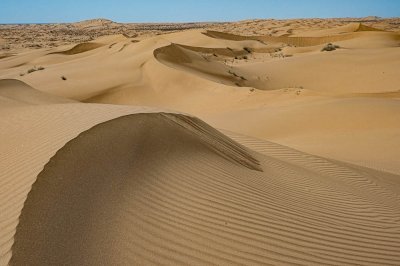
I visited in April 2021 to El Pinacate. The Shuck Toak Visitors Center has a lot of good information about the area and it's history. I was the only one there that morning and they started a documentary in English in the theater for me. They informed me the reason the entrance to the loop road to El Pinacate was closed was that a property owner in the area was creating problems. They didn't explain what the problems were but that I wouldn't have been allowed anyway because I was traveling by motorcycle. With that development I chose to hike out to the dunes, the largest in North America. They have you sign a form when you go out and then again when you leave to make sure you made it out. I saw one other person out at the dunes and she was really impressed by them. I hope to have another chance someday to go out to the craters.
Keep reading 0 comments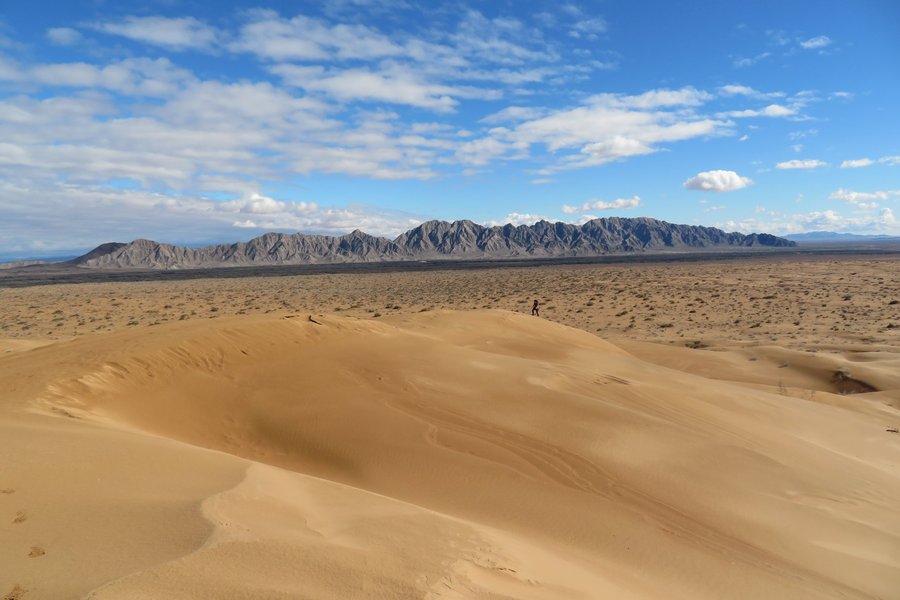
I began 2017 with a return journey to Sonora, Mexico and the stunning "Reserva De La Biosphera El Pinacate Y Gran Desierto De Altar". I was determined on completing two specific hikes/drives, which I missed during my first visit in March 2014. First, I wanted to hike to the dunes and second I wanted to see the reserves iconic otherworldly craters. We were graced with rain the previous night before our visit, which turned out to be a special surprise.
From the visitor center, you can take a 3km dirt road to a small parking lot to begin the hike. The road begins in a strange way, but its well-kept. the hike itself takes between 1.5 - 2hrs, depending on how often you take pictures and how far you want to go. Once you make it up to the summit of the nearby dunes you will have a great view of El Pinacate, and in the distance you can sea the Gulf of California.
No other hikers made the journey. In fact, only a handful of people made it to the visitor center in the couple hours we were in this section of the park. Most Arizona travelers are purpose-bound for the drinks and resorts in Puerto Penasco (Sandy Beach). I felt like I was the slowest driver on the highway, since I followed the (kilometer) speed limit, perhaps the Americans thought it was miles!
El Pinacate receives less than 4 inches of rain per year, and its just so …
Keep reading 0 comments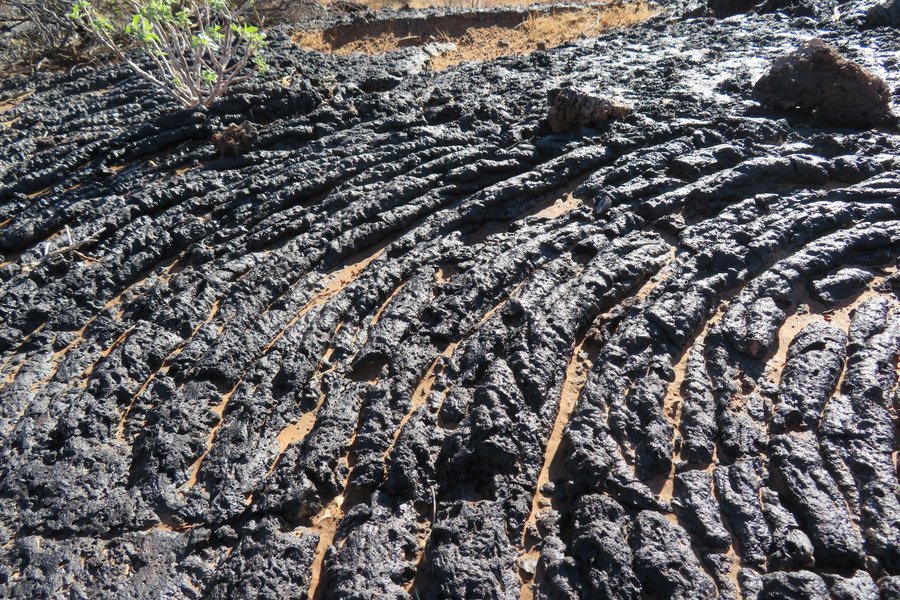
Leaving Los Angeles at 5am, roughly 8 hours later my wife and I found ourselves crossing the border into Mexico at Lukeville, Arizona. No hassle and very quick. From here it takes 1hr to drive to Puerto Penasco, your right-side landscape is the El Pinacate Grand Desert Biosphere Reserve for most of this drive. There are two major access points to the reserve, one at the 72km mark, and the other at the 52km mark. Visitors will only access a small portion of this immense reserve, but the vastness of the land will leave a lasting memory.
The visitor center is accessed at the 72km mark and is well-displayed by large signs. You won't miss it. The turn-off is a paved 7 km road that ends with one of the most scenic areas of the reserve. The Schuk Toak Museum and Visitor Center is worth visiting and is an excellent facility to plan and learn about this incredible landscape. The staff are friendly and informative. There are short walks and medium hikes that traverse this area. The location was chosen specifically for its diverse and unique surroundings. Lava flows are everywhere, diverse plant species abound, massive sand dunes are reachable by a 45 minute hike, and views of El Pinacate are often superb.
You can happily spend 2-3 hours exploring this area. The fee for the reserve is 60 pesos ($5) and this fee allows visitors to explore both access points. After one completes their visit of the Schuk Toak …
Keep reading 0 comments
